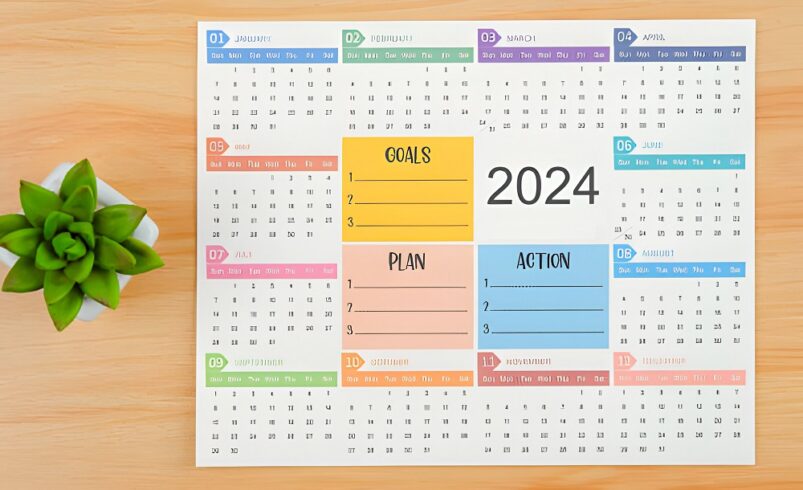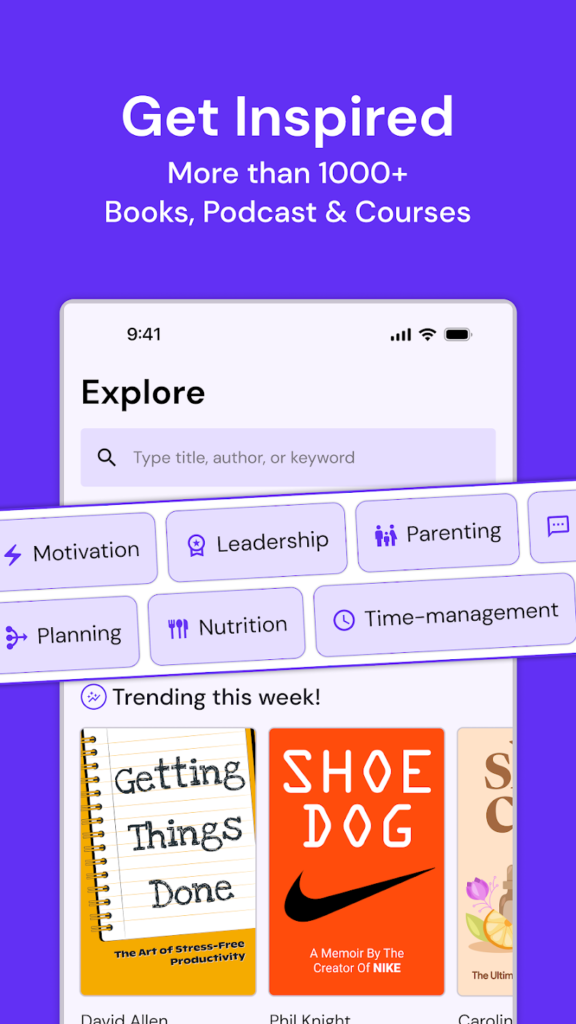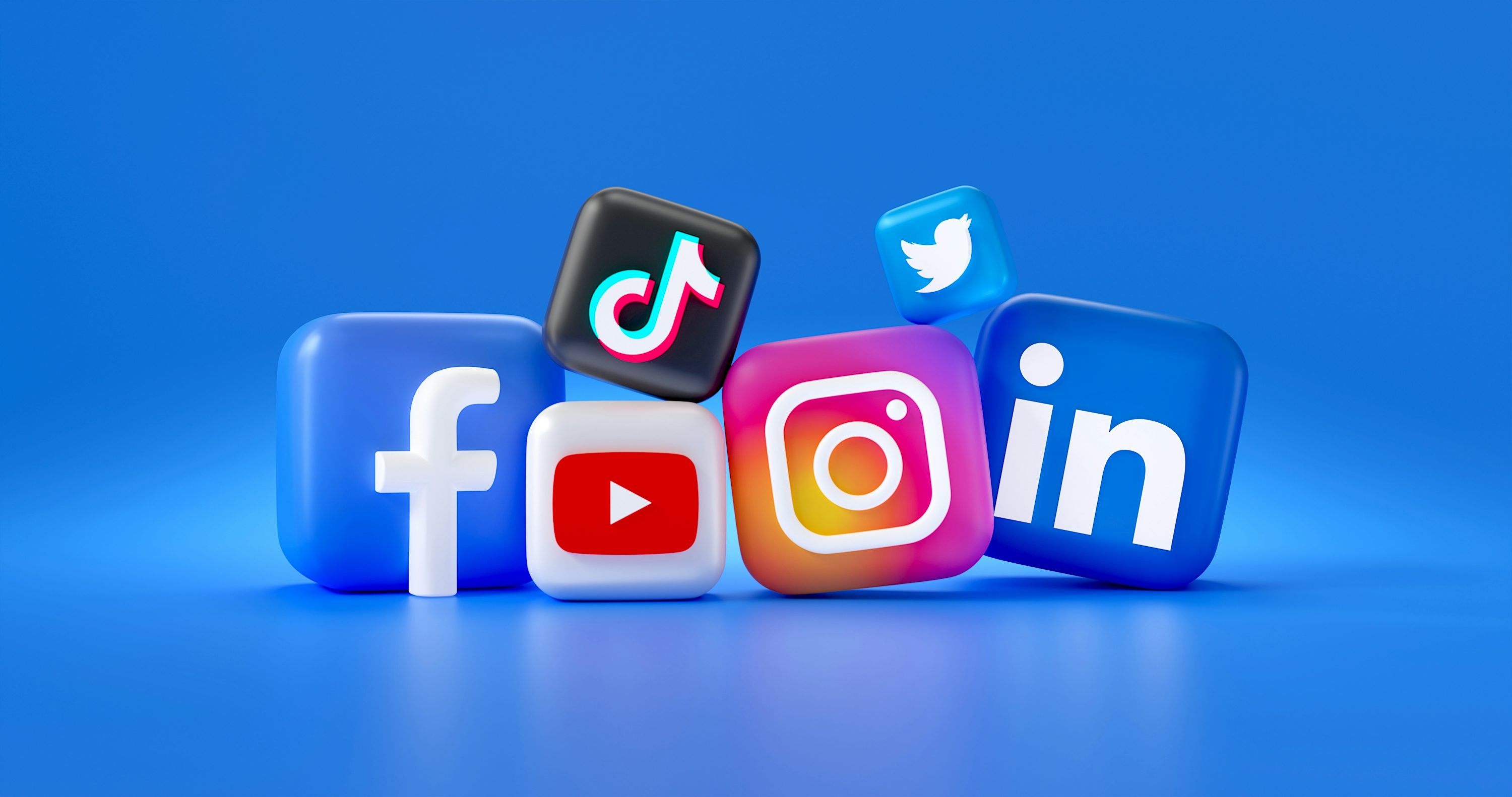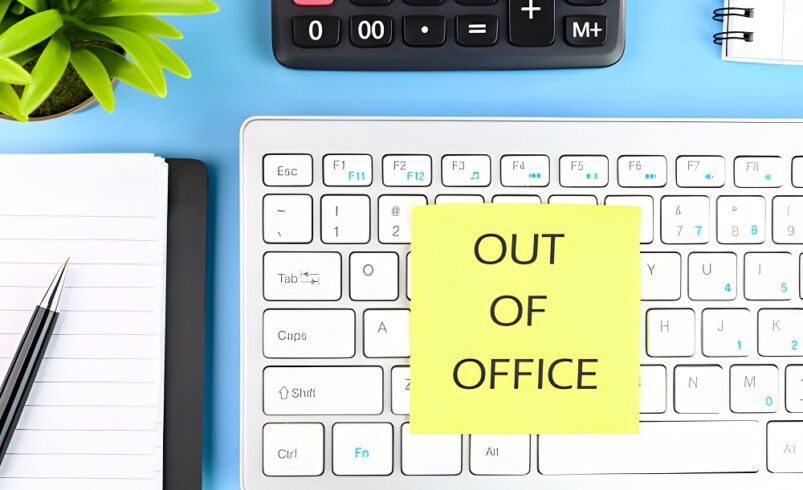
Out of office messages – the unsung heroes of professional communication. Whether you’re soaking up some sun on a much-needed vacation, stuck in back-to-back meetings, or simply trying to keep your sanity in check, these little auto-replies have got your back. They’re your way of saying, “Hey, I haven’t vanished off the face of the earth; I’m just temporarily MIA!” Without them, we’d all be left wondering if our emails have disappeared into the digital void.
The beauty of these messages? They do more than just hold down the fort while you’re gone. They can keep your colleagues informed, help clients get in touch with the right person, and even slip in a bit of personality (if you’re feeling adventurous). Crafting the perfect out of office message is a fine art – you want to sound professional, but you also don’t want to come off like a robot. Trust me, there’s a way to strike that balance, and we’re here to help you find it.
In this blog, we’ll walk you through the essentials of creating a killer out of office message. We’ll even throw in some examples that’ll make your inbox feel a little less formal. So, whether you’re heading out on a glamorous getaway or just hiding in the break room, read on to make sure your out of office game is on point!
Contents
- 1 What is an Out of Office Message?
- 2 General Professional OOO Messages:
- 2.1 Short-term Leave:
- 2.2 Extended Period of Leave:
- 2.3 Conference Attendance:
- 2.4 Holiday Season:
- 2.5 Emergency Absences:
- 2.6 Maternity/Paternity Leave:
- 2.7 Medical Leave:
- 2.8 Training or Professional Development:
- 2.9 Remote Working Adjustments:
- 2.10 Automated Service Message:
- 2.11 Industry-Specific Messages:
- 2.12 After-Hours Replies:
- 2.13 Project-Specific Absences:
- 2.14 Wellness Breaks:
- 2.15 Volunteering and Social Good:
- 2.16 Seasonal Work Pattern Adjustments:
- 2.17 Working Abroad or Travel:
- 2.18 Technology Free Retreats:
- 2.19 Bereavement Email:
- 2.20 Transition Periods:
- 3 Professional OOO Example:
- 4 Humorous or Creative OOO Example:
- 5 Out of Office Messages on Different Email Platforms
- 6 Tips for Writing Professional OOO Messages
- 7 Common Mistakes to Avoid in OOO Messages
- 8 Frequently Asked Questions (FAQs)
What is an Out of Office Message?
An out of office (OOO) message is your email’s way of telling people, “I’m not here right now, but I’ll get back to you as soon as I’ve returned to the land of Wi-Fi.” It’s an automated response that kicks in whenever you’re unavailable, and it ensures that whoever emails you knows exactly why you’re ghosting them temporarily.
Here are five things you’ll want to include in your OOO message:
- Dates you’re away: People need to know when you’re out and, more importantly, when you’ll be back to rescue their emails from limbo.
- Why you’re gone (optional): Whether you’re “on vacation” or “in meetings,” you can decide how much detail to share. Just don’t tell them you’re “napping under your desk.”
- When they’ll hear from you again: Let folks know when they can expect a response – because nobody likes waiting forever.
- Who to bug in your absence: Give them a contact for urgent matters, unless you want them to bombard you with “URGENT” emails anyway.
- A friendly sign-of: Even if you’re away, your email doesn’t have to be all business. End with something polite – or even a bit cheeky, if that’s your style.
So here’s your list of perfect out-of-office message examples:
General Professional OOO Messages:
- Thank you for your email. I’m currently out of the office with limited internet and will return on [date].
- I am away from the office until [date]. For anything urgent, please email [contact email] or call [number]. Thank you!
Short-term Leave:
- Thank you for your email. I am out of the office today with limited email access. I will respond to you upon my return on [Date].
- Hello! I’m currently away from the office on a short break but will be back on [Date]. I look forward to catching up soon!
- I am out of the office until [Date]. Thank you, and I’ll get back to you as soon as possible.
- OOO until [Date].
- Thank you for reaching out. I am out of the office on a short leave of absence and will return on [Date]. For general inquiries, please contact [General Inquiry Email/Phone Number].
Extended Period of Leave:
- Hello! I’m currently on a sabbatical, soaking in new experiences and inspirations. I’ll be back and ready to tackle new challenges on [Date]. Cheers!
- Thank you for your email. I am out of the office on an extended leave period until [Date]. Please direct your inquiries to [Alternate Contact Person or Department] for urgent matters.
- Hi there! I’m on a long-overdue adventure, exploring [Place or Activity], and will not be available until [Date]. Looking forward to catching up upon my return!
- I am currently out of the office on extended leave and will not return until [Date]. During this period, I will have limited access to email.
- Greetings! I’m taking some time off to recharge and focus on personal growth, and I will be away until [Date]. Your message is important to me, and I’ll respond as soon as possible upon my return.
Conference Attendance:
- Hello! I’m currently attending [Conference Name] to bring our team the latest [Industry Trend/Technology] insights. I’ll be out of the office from [Start Date] to [End Date], with intermittent access to email. I’ll get back to you as soon as I can after [Date].
- Thank you for your message. I am attending [Conference Name] and will be out of the office until [Date].
- Hi! I’m currently at [Conference Name], learning about [Subject]. I’ll be back and buzzing with ideas on [Date].
- I am away attending [Conference Name] from [Start Date] to [End Date] and will have limited internet access. For urgent matters, [Alternate Contact] will be handling my responsibilities.
- Hey there! I’m off learning and networking at [Conference Name], and I’ll be back in action on [Date]. I will reply once I’m back, but if something urgent pops up, please contact [Alternate Contact]. Thanks for your understanding!
Holiday Season:
- I’m currently out of the office celebrating with family and friends and will return on [Date]. If your matter is urgent, please contact [Alternate Contact]. Wishing you a joyous holiday season!
- Season’s Greetings! I am away from the office until [Date] for the holiday season. May your holidays be merry and bright!
- Thank you for your email. I’m out celebrating the holiday season and will be back on [Return Date]. Should you need urgent help, [Alternate Contact] has you covered. Happy Holidays!
- Hello! I’m currently taking some time off to enjoy the festive season and will return on [Return Date]. Wishing you a wonderful holiday season!
- I’m out of the office soaking up the holiday cheer until [Return Date]. May your holidays be filled with joy and laughter!
Emergency Absences:
- Thank you for reaching out. I’m unexpectedly out of the office due to a personal emergency and will have limited internet to email.
- I am currently dealing with an emergency and will not be in the office until further notice. Thank you for understanding.
- Due to unforeseen circumstances, I am away from the office. I plan to return by [Tentative Return Date], but please contact [Alternate Contact] for urgent matters.
- Hello, I am currently dealing with a personal matter and have limited internet access. I appreciate your understanding.
- Due to an emergency, I will not be available until further notice. Your understanding during this time is greatly appreciated.
Maternity/Paternity Leave:
- I am on maternity/paternity leave until [Date]. I look forward to reconnecting upon my return.
- Thank you for your email. I’m currently on parental leave and will be back in the office around [Tentative Date].
- Hello! I’m on maternity/paternity leave and plan to return by [Date]. In the interim, you can contact [alternate contact] at [contact details]. Thank you
- Thank you for reaching out. I’m on parental leave until [Date] and won’t check email regularly. For urgent matters, please reach out to [alternate contact] at [contact email or phone].
Medical Leave:
- I am currently on medical leave and cannot access email until [Date]. I appreciate your understanding.
- I am out of the office for medical reasons and plan to return around [Tentative Date]. Please direct urgent inquiries to [Alternate Contact]. Your patience is appreciated.
- I’m away from the office due to health reasons and won’t be checking email regularly. Thank you for understanding.
- I am on medical leave and will return to the office by [Return Date].
- I’m on medical leave with limited internet until [Return Date]. Thank you for your thoughts.
Training or Professional Development:
- I am currently attending a professional development course and will return to the office on [Date].
- Thank you for your email. I’m out for training and will have limited internet until [Date].
- I’m away enhancing my skills at a training workshop until [End Date]. Looking forward to connecting after my return!
- I am out of the office attending a training session and will return on [Date]. For immediate matters, [Alternate Contact] is available to support you.
- Thank you for your message. I’m out for professional development and will have limited access until [Date].
Remote Working Adjustments:
- I am currently adjusting to a new remote work setup and you may experience delays in response. I appreciate your patience.
- Due to remote working adjustments, I might respond slower to emails. I appreciate your understanding.
- I’m transitioning to a different remote work environment so you may see some delays in response. I appreciate your flexibility.
- Thank you for your email. My response time might be affected as I adjust to a new remote work setup.
- I’m changing my remote work environment, which may delay my email responses.
Automated Service Message:
- Thank you for reaching out! Our team is currently helping other customers, but your message is important. The expected wait time is [Wait Time].
- Hello! You’ve reached us outside our regular business hours. We’re available [Business Hours]. Please leave your message, and we’ll get back to you as soon as we’re back in the office!
- I appreciate your patience! All our representatives are currently assisting other customers. Your estimated wait time is [Wait Time].
- Thanks for contacting us! We’re experiencing a higher-than-usual volume but want to get to your request as soon as possible. Expect a response within [Response Time].
- Your message has been received! We’re on it, and you’ll hear from us within [Response Time]. If this matter requires more immediate attention, please call our urgent support line at [Phone Number].
Industry-Specific Messages:
- Legal: Thank you for your message. I’m currently in court and will have no access to my emails. For urgent legal matters, please contact [Alternative Contact].
- Academic: Greetings! I’m immersed in research and student mentoring until [Date]. Please contact [Department Secretary] or [Alternative Contact] for immediate academic inquiries.
- Healthcare: I’m currently on rounds and will return [Time]. For medical inquiries, please contact [Alternative Medical Contact] or visit our emergency department for urgent care.
- Tech: I’m currently debugging the future and will be offline until [Date]. For immediate tech support, please escalate to [Tech Support Email].
- Real Estate: I’m out scouting dream homes for clients and will have limited email access until [Date/Time]. For urgent property matters, [Alternative Contact] is your go-to.
After-Hours Replies:
- Thanks for reaching out! Our office is currently closed. We’re open [Business Hours]. I’ll make sure to get back to you when I return.
- Hello! You’ve caught us after hours. We value your message and will respond during our next business hours, [Business Hours].
- Our office is currently closed, but your message is important to us. We’ll be back in action [Next Business Day] and will reply promptly.
- Thank you for your message! We’re out of the office right now but will return [Business Hours]. Your message will be on top of our list.
- You’ve reached us after hours! Rest assured, we’ll get to your message first thing when we’re back in the office [Next Business Day].
Project-Specific Absences:
- Thank you for your email. I’m currently on a project with a tight deadline and will have limited email/phone access until [Project End Date].
- I’m deep in the trenches of a major project and will be resurfacing on [Date].
- Hello! I’m out on a project mission and will have sporadic email access until [Date].
- I am currently fully engaged in an important project and will be less responsive until [Date].
- I’m in project mode and focused on delivery until [Date]. For urgent matters, please contact [Alternative Contact].
Wellness Breaks:
- Thank you for reaching out. I am currently on a wellness break to recharge and will return to the office on [Date]. Your understanding is appreciated.
Volunteering and Social Good:
- Hello! I’m currently out of the office, volunteering with [Organization/Project] to make a difference in our community. I will return on [Date].
- I am away from the office, participating in a charity event to support [Cause]. I’ll be back and responsive by [Date].
Seasonal Work Pattern Adjustments:
- Thanks for your message! Please note, our office is on summer hours and I’ll be checking emails less frequently. I’ll ensure to respond by [Next Check-in Date].
- During the holiday season, our office operates on a modified schedule. I’ll be available for limited hours until [Return Date].
Working Abroad or Travel:
- I’m currently working remotely from [Location], and you may find responses delayed due to time zone differences. I’ll do my best to reply promptly.
- Hello! I’m exploring [Location] while working remotely until [Return Date], which might affect my response time.
Technology Free Retreats:
- I am on a digital detox retreat until [Return Date] and will not be accessing email. For urgent matters, please contact [Alternative Contact].
- Thank you for your message. I’m undergoing a technology-free retreat to rejuvenate and will be completely offline until [Return Date].
Bereavement Email:
- I am currently away from the office on bereavement leave and will return by [Return Date] . For urgent matters, please contact [Alternative Contact].
- Thank you for your email. I’m on bereavement leave and will have limited access to my emails until my return. For urgent help, please get in touch with [Alternative Contact] at [contact details].
Transition Periods:
- As I transition to a new role within our organisation, my response time may be slower than usual. I’ll be fully available again by [Return Date].
Professional OOO Example:
- Thank you for your email. I am currently out of the office and have no internet access, but I will return on [Return Date].
- I am away from the office until [Return Date]. Please email [Contact Email] or call [Number] for immediate assistance. Your message is important to me, and I will respond as soon as possible upon my return.
Humorous or Creative OOO Example:
- I am currently out of the office on an intergalactic space adventure. My ETA for returning to Earth is [Return Date].
- I’m on a quest to find the Holy Grail of coffee until [Return Date]. For truly urgent matters (or excellent coffee recommendations), please reach out to [Alternate Contact].
Out of Office Messages on Different Email Platforms
Here’s a simple guide on how to set up out-of-office messages on Microsoft Outlook, Google’s Gmail, and Yahoo Mail.
Microsoft Outlook (Desktop App)
- Open Outlook: Launch the Outlook desktop app.
- Go to File: In the top left corner, click the ‘File’ tab.
- Select Automatic Replies: You’ll see an option labelled ‘Automatic Replies (Out of Office)’. Click it.
- Turn on Automatic Replies: In the new window, select ‘Send automatic replies’.
- Set the Time Frame (Optional): If you want the auto-reply to only go out during specific dates/times, check the ‘Only send during this time range’ box and input the start and end time.
- Write Your Message: There are two tabs – ‘Inside My Organization’ and ‘Outside My Organisation’. Write your message in each tab depending on who you want to notify (e.g., colleagues vs. external contacts).
- Save and Close: Once you customise your message, click ‘OK’ to save and activate your out of office reply.
Google’s Gmail
- Open Gmail Settings: Open Gmail and click the gear icon in the upper-right corner. Then select ‘See all settings’ from the dropdown.
- Go to the General Tab: Under ‘Settings’, you’ll automatically land on the ‘General’ tab.
- Scroll Down to Vacation Responder: Scroll down until you see the ‘Vacation responder’ section.
- Turn on Vacation Responder: Click the checkbox for ‘Vacation responder on’.
- Set the Date Range: Enter the start and end dates for when you want your out of office message to be active. You can leave the end date blank if you don’t know when you’ll be back.
- Write Your Message: Fill in the ‘Subject’ and ‘Message’ fields. If you only want your message sent to people in your contacts, check the box labelled ‘Send responses only to people in my Contacts’.
- Save Changes: Scroll to the bottom and click ‘Save Changes’ to activate your vacation responder.
Yahoo Mail
- Open Yahoo Mail Settings: Open Yahoo Mail, click the gear icon in the upper-right corner, and then select ‘More Settings’.
- Go to the Vacation Response Tab: On the left-hand side, find and click ‘Vacation response’.
- Turn On Vacation Response: Toggle the switch to ‘Turn on vacation response’.
- Set the Date Range: Enter the start and end dates for when you want the auto-reply active.
- Write Your Message: In the ‘Message’ field, type your out of office message. Yahoo also lets you set different responses for specific domains if needed.
- Save Your Changes: Once your message is written, click ‘Save’ to activate your auto-reply.
Tips for Writing Professional OOO Messages
Here are five tips for writing professional out of office messages:
- Keep it clear and concise: Ensure your message is easy to read and straight to the point. Include essential details like the dates you’re away and when the sender can expect a response, but avoid unnecessary jargon or lengthy explanations.
- Set expectations: Let people know when you’ll be back and whether you’ll be checking emails during your absence. This helps avoid any frustration on the sender’s end and keeps communication smooth.
- Provide an alternative contact: If something urgent comes up while you’re gone, make sure to direct people to a colleague or department that can assist them. This shows you’re still committed to ensuring things run smoothly in your absence.
- Stay professional, but show some personality: While it’s important to remain formal, don’t be afraid to add a touch of warmth or humour, depending on your workplace culture. It keeps the message approachable and human.
- Double-check for typos: Your out of office message reflects your professionalism, even when you’re not around. Proofread your message to make sure it’s free of errors, and test it before it goes live to avoid any technical glitches.
Common Mistakes to Avoid in OOO Messages
- Vague information: Avoid being vague about your availability and return date. Specific details help in managing responses and expectations
- Overly personal details: Keep the message professional by not sharing too much about your personal activities or location specifics unless it’s a relaxed company culture where such details are appreciated
- Forgetting to set or update your message: Ensure your out-of-office message is activated before you leave and updated or deactivated upon your return
- Neglecting to provide alternate contacts: Failing to mention an alternate contact leaves the sender without options for urgent assistance
- Too much text: Keep your message concise. A lengthy message might not be fully read, leading to important information being missed.
Frequently Asked Questions (FAQs)
- Can I customise my out of office message for different recipients?
Absolutely! Customising your out of office message for different recipients can save you from sounding like a robot, and it allows you to keep things more personal. For example, in Microsoft Outlook, you can set one message for your internal contacts (your co-workers) and another for external contacts (clients or vendors). That way, you can give your colleagues a more relaxed, casual message while staying professional with external contacts.
Let’s say your internal message goes something like:
“Hey Team, I’m out of the office until September 25th. Feel free to message me, but I’ll likely be ignoring you while I sip cocktails on a beach. For anything urgent, bug John instead.”
But for your external contacts, you may want to go with something like:
“Thank you for reaching out. I’m currently out of the office and will be returning on September 25th. In the meantime, please contact our support team at [email address] for immediate assistance.”
See the difference? This way, your internal team knows you’re keeping it light, and your external contacts still see you as the professional you are – cocktails or not. In Gmail, while you can’t get quite as specific as Outlook, you can still limit responses to only those in your contact list, meaning the people you actually care about hearing from will get the message. The random newsletters and promotional emails? They’ll be none the wiser.
- What happens if I forget to turn off my out of office message?
We’ve all been there – you’re back at your desk, catching up on work, when someone emails you to tell you they just got your OOO reply… but you’ve been back for days. Oops. If you’ve set an end date, though, your message will automatically stop after that date. No awkward “Hey, I’m back… sorry for the delay!” emails needed.
But if you didn’t set an end date? Well, your out of office message will keep going indefinitely, and people will wonder if you’ve decided to live off the grid forever. Imagine your boss emailing you a week after your return, only to receive a message like, “I’m currently out of the office and will be back on September 10th,” when it’s already the 17th. Not a great look!
To avoid this, always set an end date, or make sure to manually turn it off when you’re back in action. If you’re worried you’ll forget (because let’s be honest, it’s easy to forget), you can use apps from Microsoft and Google themselves that can help by sending you reminders to update or turn off your out of office message once you’ve returned. It’s like having a virtual assistant who doesn’t judge you for your post-vacation brain fog.
- Can I schedule out of office messages in advance?
Yes! Scheduling your out of office messages ahead of time is like setting your coffee maker to brew before you wake up – it just makes life easier. Both Outlook and Gmail let you pre-schedule your out of office replies, so you don’t have to scramble at the last minute when you’re about to dash out the door for that long-awaited trip.
For example, if you know you’re leaving on a Friday at 5pm, you can schedule your message to start exactly at 5:01 p.m. and end at 9 a.m. on the Monday you return. This way, you don’t have to worry about setting it up while you’re mentally already on vacation. It also ensures that even if you’re delayed on your return, your OOO message will stop when you want it to – so you don’t get that dreaded email asking why you haven’t replied, only to realise your auto-reply never turned off.

Think of this feature like packing your bags the night before a trip – it’s just one less thing to worry about. Gmail and Outlook have got your back so you can fully focus on kicking back while you’re away.
- What if someone emails me multiple times while I’m away?
We all have that one colleague or client who seems to think that the more they email, the faster you’ll reply – even when your out of office is set. But don’t worry, your OOO message won’t blow up their inbox. Typically, these automatic responses only send once per person while you’re away, no matter how many emails they send. So, if someone fires off five emails in two days, they’ll only get your OOO message once, not every time they hit send (phew!).
But here’s a pro tip: if you’re going to be out for a while, it might be a good idea to check in occasionally or have a backup plan in place. Imagine your top client emails you about an urgent project, but they only get one auto-reply and then crickets for the next few days. To avoid this, consider adding an alternate contact to your message. For example, your OOO could say something like:
“I’m out of the office and will return on September 25th. For urgent matters, please contact Sarah at [email address].”
This way, if someone really needs to reach someone, they’re not left hanging. And your inbox won’t be overflowing with “Did you get my email??” by the time you’re back.
- Do out of office messages work on mobile apps?
Yes – Setting up an out of office message on the go is totally doable – no laptop required. Whether you’re at the airport, in a cab, or already lounging by the pool, you can easily set your OOO reply from your phone using the Outlook, Gmail, or Yahoo mobile apps.
For example, if you’re using the Outlook mobile app, all you need to do is open the app, tap the three horizontal lines (that’s the menu), and navigate to ‘Settings’. From there, you can set your ‘Automatic Replies’ just like you would on your desktop. Same goes for Gmail – open the app, head to ‘Settings’, and set your ‘Vacation Responder’.
The process is simple and fast, perfect for those moments when you’ve already left the office and suddenly remember you didn’t set up your OOO message. No need to panic – just a few taps, and you’re covered. And if you’re really on the move, it’s a great way to stay on top of things without lugging around your laptop. So, even if you’re halfway to your destination, you can relax knowing that your OOO message is ready to roll.
Welcome to Wizdom
In today’s hectic world, self-improvement can feel like trying to climb Everest without a map. But what if you didn’t need to scale mountains overnight? What if you could take it one tiny, manageable step at a time? That’s where Wizdom comes in. This app, which serves up bite-sized summaries of the best self-help books and audio content, helps you turn life’s little tasks – like setting up an out of office message – into moments of personal growth. Think of it as your pocket-sized life coach, nudging you towards better habits without the overwhelming “you need to overhaul your life in 30 days” pressure.
Take something as seemingly mundane as setting up an out of office message. It might feel like a small checkbox you only think about before heading off on vacation. But in reality, it’s a great example of how the little things we do each day reflect larger habits and mindsets. A quick glance at a book like ‘Atomic Habits’ – featured on Wizdom – shows you that tiny changes, repeated consistently, add up to big results. So yes, even something as simple as making sure your OOO message is clear, concise, and proactive can pave the way for bigger organisational wins, like staying on top of emails, setting better work-life boundaries, and ultimately, reducing your stress levels. It’s these little tweaks to your daily routine that slowly turn into life-long habits, and Wizdom is all about those tiny, powerful nudges.
The beauty of Wizdom is that it doesn’t ask for massive time investments. It knows you’re busy! With short, engaging summaries, you can absorb the key lessons from best-selling books on productivity, mindfulness, and communication during your coffee break, or on your commute. And these lessons are practical – you’re not just being told to “live your best life” in vague terms. You’re getting real, usable advice, like how to create systems to make your life easier. Picture this: instead of leaving your inbox to pile up like an unmanageable laundry basket, you set up smart email habits, starting with that trusty out of office message. Suddenly, you’re someone who’s on top of things, not buried under them. Wizdom’s small, actionable tips turn everyday challenges into opportunities to grow, one step at a time.
And it’s not all about work, either. Wizdom encourages you to improve all areas of your life, from how you handle your schedule to how you find time to relax and recharge. You can start with something simple – like setting up that OOO message before your next vacation – and watch how, bit by bit, you start integrating more mindful, productive habits. By listening to a short audio or reading a quick summary, you’ll slowly build a toolkit of strategies that make self-improvement feel less like a chore and more like a natural part of your day.
In the end, Wizdom teaches that progress isn’t about giant leaps but about taking it one tiny, manageable step at a time. It’s about paying attention to the small details, like your out of office message, that, when combined, help you build a more intentional, successful, and balanced life. So go ahead – let Wizdom help you turn even the smallest moments into stepping stones for long-term personal growth, one thoughtful habit at a time. And yes, even your email habits can count towards self-improvement!
So, there you have it – the recipe for a top-tier out of office message. By covering your dates of absence, giving a reason (or not, we won’t judge), and pointing folks to someone else for immediate help, you’re setting yourself up for smooth sailing. Plus, that friendly sign-off? It’s the secret sauce that keeps things professional yet personable. You want people to feel informed, not like they’re being shrugged off by an auto-bot.
Incorporating effective out of office messages into your work routine is just one piece of the productivity puzzle. If you’re looking to level up even further, Wizdom has your back in more ways than one. This app offers bite-sized summaries of top self-help books and audio content, making it easier than ever to absorb valuable insights while you’re on the go. Whether you’re looking to boost your time management skills, master the art of communication, or simply find balance in your busy schedule, Wizdom has a wealth of wisdom (pun intended) at your fingertips.
So while your out of office message is doing its job, why not take a few minutes to sharpen your own skills with Wizdom? The next time you’re catching a break or waiting for your flight, dive into quick, actionable takeaways that can enhance your professional life. With Wizdom, you can return to your inbox not only refreshed but also a little wis

Zia Hawwa
Currently pursuing a Degree in Criminology, Zia’s passions lie in the world of literature and the human psyche. She loves what the world has to offer, and is always on the journey of satisfying her curiosity.
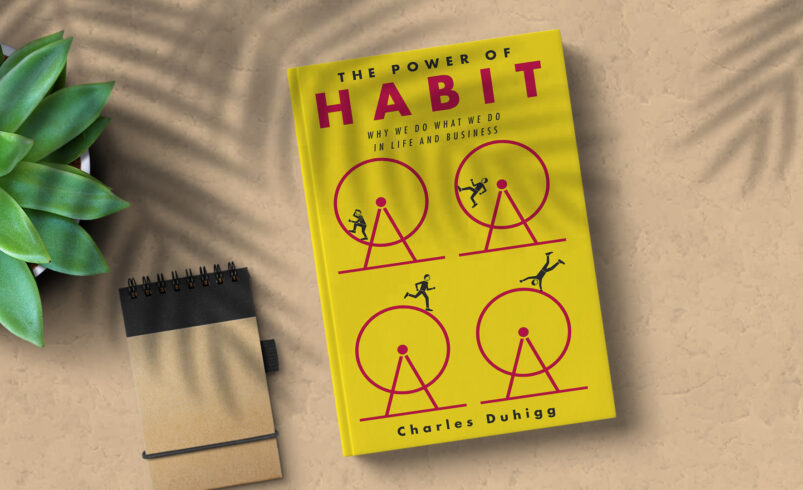
Top Ten Books like The Power of Habit
Recent Posts
- 25 Top Quotes from The 10X Rule to Supercharge Your Ambition
- 10 Books You Must Read to Succeed in Your Career
- 30 Little Tricks for Big Success in Relationships
- 25 Life-Changing Self-Help Books to Read This December: Boost Your Mood and Your Mind
- 25 Amazing Self-Care Tips for December: Wrap Yourself in Joy, Not Stress

